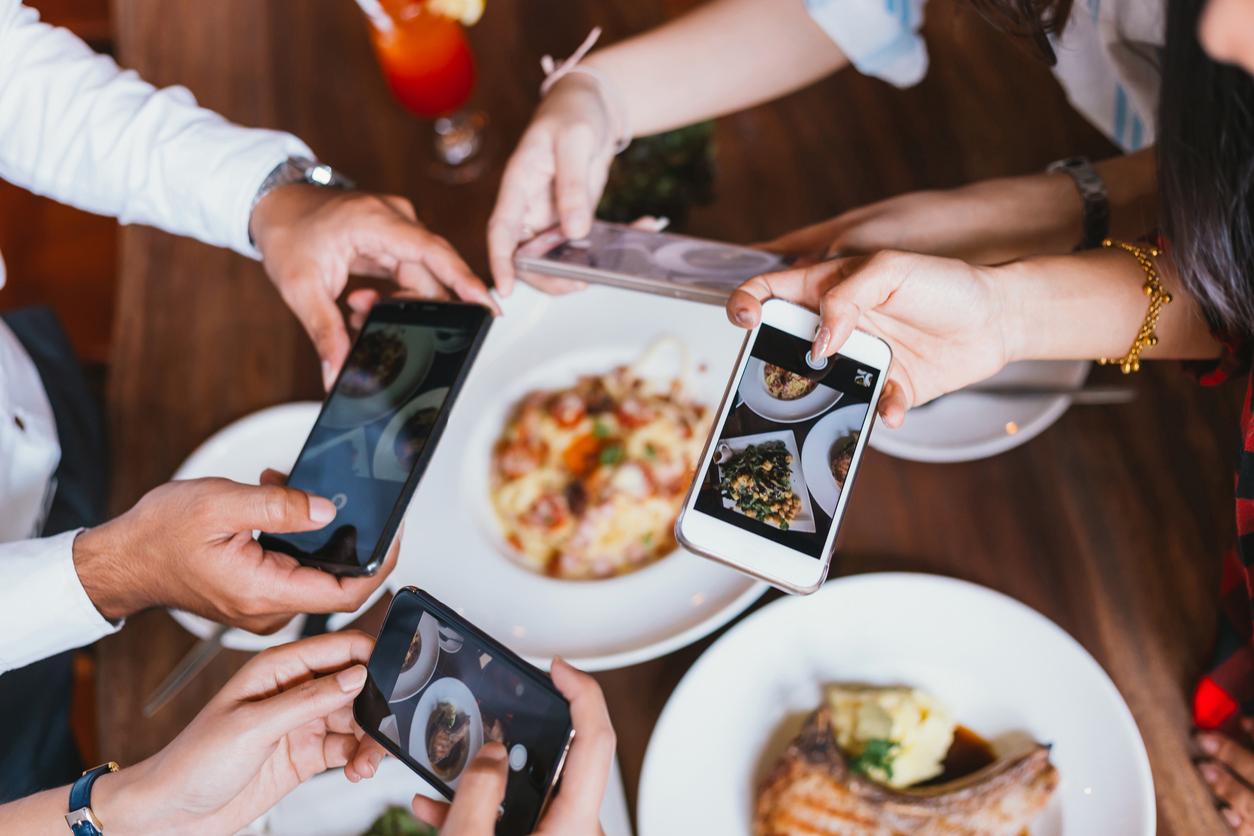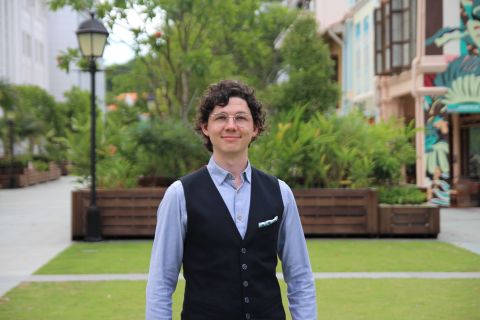
By Alvin Lee
SMU Office of Research & Tech Transfer – A bunch of your friends wants to meet for dinner. Different restaurants are suggested but nobody seems to be able to agree on the type of cuisine to settle on, never mind the specific establishment. Eventually a consensus is reached but only after endless to-and-fro over the food on offer and a restaurant’s location.
As part of SMU’s artificial intelligence initiative Preferred.AI, recent SMU School of Information Systems graduate Darryl Ong Rong Sheng is developing a new app called FoodRecce (click here to download the app) to smooth out the restaurant selection process. It starts with what Ong calls the “preference enrolment” process on a device the first time a user opens the app.
“By looking at this image, I just indicate whether I love it or hate it,” Ong explains, referring to the app serving up food pictures on a mobile device and users swiping right (like) or left (dislike). “As it goes, FoodRecce will learn what kind of restaurants you actually like, just based on saying yes or no.”
Once the app has that information, the user can then go through the following steps to set up a group event:
- Create group event;
- Invite friends;
- Add personal preferences; and
- Get group recommendations
“You and all your friends enrol their preferences, the machine learning algorithm will then learn what your preferences are, and then get to a middle point of where each of you may be comfortable,” elaborates Ong, who is currently working on FoodRecce as a research engineer at Preferred.AI. “So then when you hit the recommendations tab, the app recommends a list of restaurants that your group members would actually like for your event.”
The big (food) picture
FoodRecce was part of Ong’s pursuit in his final year as an undergraduate, a guided research project done over two terms. The project was supervised by SMU Associate Professor of Information Systems Hady Lauw, who also heads up Preferred.AI.
Speaking to the Office of Research and Tech Transfer, Ong explains the architecture of how the Python programming language and the database (MongoDB) on the backend helped deliver the recommendations to the frontend. After many events, FoodRecce would be able to predict a group’s most preferred choice of restaurants based on the past preferences of individual group members, and the events they have attended.
The key feature, however, is enabling users to access preferred restaurants from the very beginning without typing any key words, e.g. ‘Thai food’ or ‘pasta’ or ‘vegetarian’, etc. As such, an enticing food picture is key to a restaurant being swiped right.
“Given that our database contains many photos, with some of them being irrelevant, we have received comments that there were many irrelevant photos of menus and restaurant store fronts. This affected the overall experience.” Ong explains. “To deal with that problem, we built a classification algorithm to determine whether a photo was that of food or not.
“Using that, we assigned scores to each photo. We pick the highest scored photo to be the main photo [for a restaurant] but it may not be the best photo because a particular restaurant may have a very limited amount of photos. We pick the best available one but if a restaurant does not have a photo, we choose to omit it because our application is based on visual selection.”
Finding the dough in the food pie
FoodRecce currently bases its recommendations off restaurant listings on major platforms such as Yelp, and the listings are periodically updated with refreshed information from various platforms. While the app is still in its infancy and currently features only restaurants in Singapore, Professor Lauw and Ong are already thinking about the commercial possibilities beyond the island.
“One possibility is an advertising model,” Professor Lauw shares, referring to business models for FoodRecce. “As a user is indicating his or her preferences swiping left and right, maybe we can promote restaurants that may want to be shown to certain categories or demographics or users.
“It can also be a profiling model where some restaurants just want to improve the amount of information that they provide. Think of it as a ‘Facebook of restaurants’ where restaurants can create an account and they can say, ‘Hey, let me give you some information. I will tell you what my menu today is" and so on. And then a lot of users get to discover them.”
Commenting on the current situation of restaurants offering discounts to attract business, Professor Lauw intuits that is not how he imagines FoodRecce will develop.
“People want more than just discounted food,” he asserts. “They want good food, so I think there's room for something that tells them what they really like or what they really prefer, instead of just telling them what is currently discounted. So that's where I think we might have a positioning.”
To download the FoodRecce app, please click here!
Back to Research@SMU Feb 2020 Issue
See More News
Want to see more of SMU Research?
Sign up for Research@SMU e-newslettter to know more about our research and research-related events!
If you would like to remove yourself from all our mailing list, please visit https://eservices.smu.edu.sg/internet/DNC/Default.aspx

